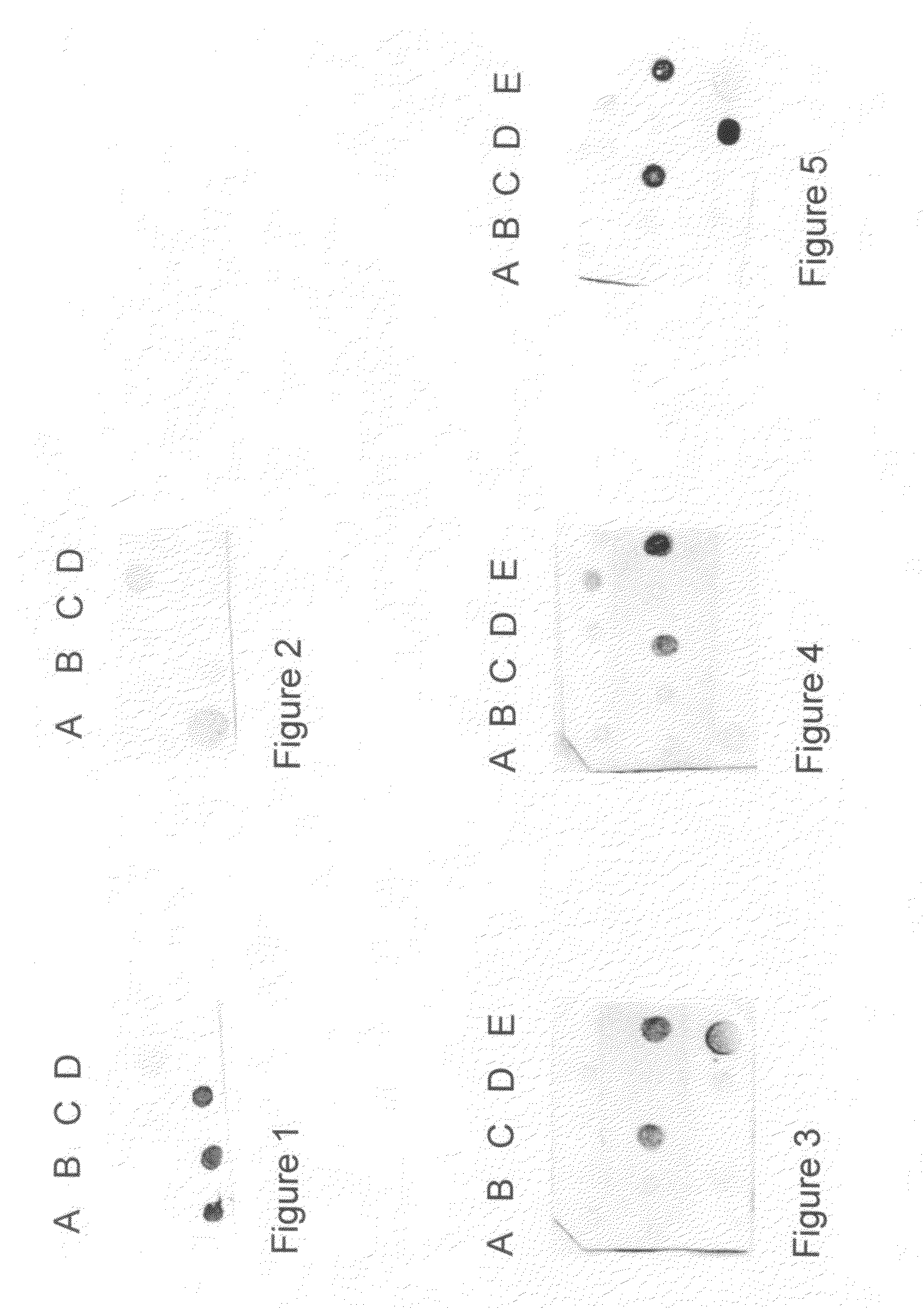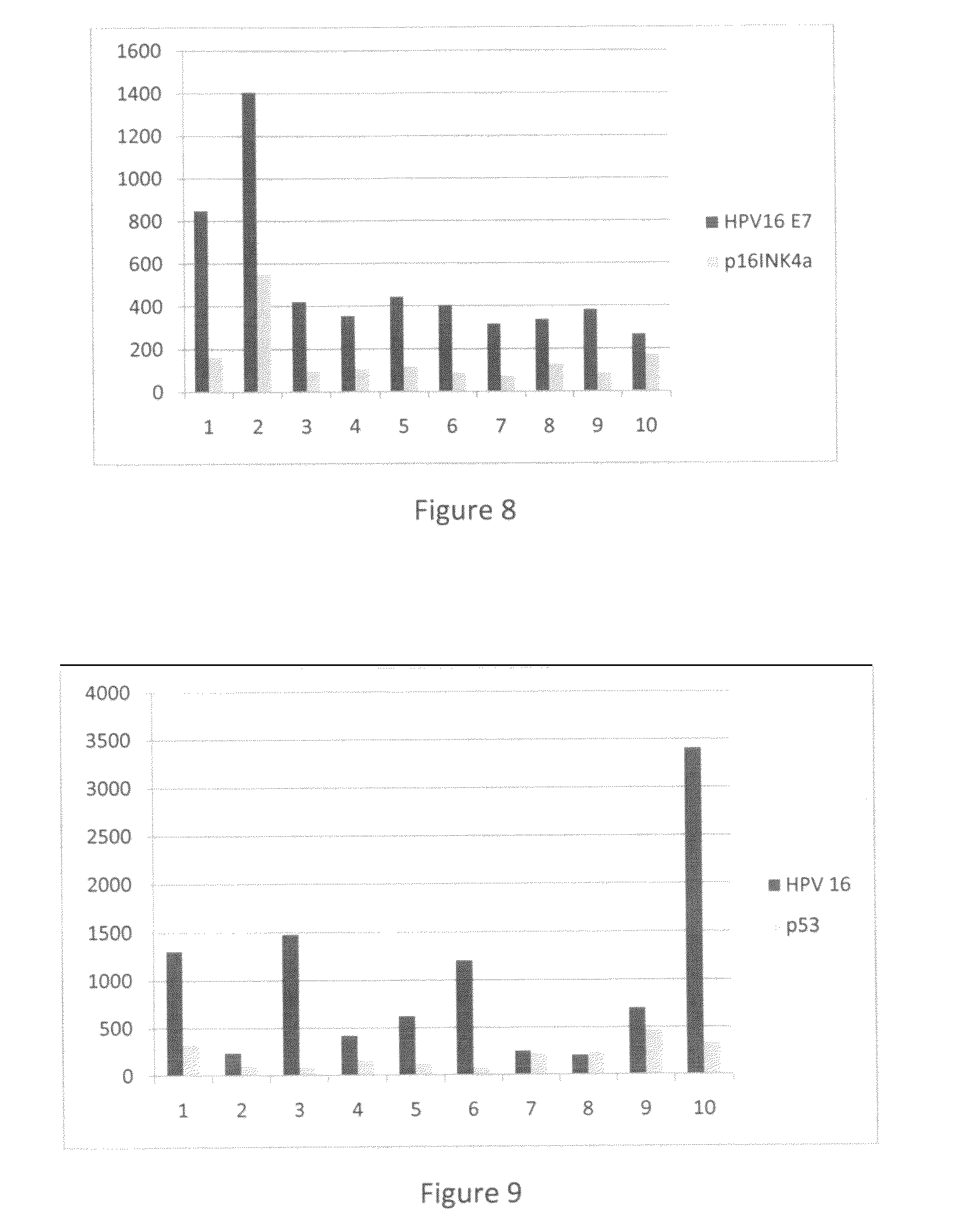Detection of early stages and late stages HPV infection
a technology of hpv infection and early stage, which is applied in the field of early stage and late stage hpv infection detection, can solve the problems of poor inter- and intra-observer agreement, high risk of progression toward invasive cervical cancer, and difficulty in obtaining samples
- Summary
- Abstract
- Description
- Claims
- Application Information
AI Technical Summary
Benefits of technology
Problems solved by technology
Method used
Image
Examples
examples
A. Detecting HPV Proteins from Biological Samples Using One Anti-HPV Antibody
1. Direct EIA: One or More HPV Proteins Coated on Microtiterplate to be Detected by One or More Anti-HPV Antibodies
[0120]Clinical samples from cervical scrapes were obtained for detection of HPV E6, E7 or L1 proteins on direct EIA. Cervical cells from various sample sources included cervical scrape cells in liquid based cytology solution, cervical scrape cells in transport medium (used for HPV DNA test sample), or cervical scrape cells in lysis buffer. To perform the direct EIA described herein, specimens were processed, centrifuged, washed, and lysed to generate cell lysate as analyte. The proteins in the cell lysate were quantitated and coated to a microtiterplate with the same amount of protein in each well. The plate was blocked, and detected by each HPV monoclonal antibody followed by HRP-conjugated secondary antibody (anti-mouse IgG or anti-rabbit IgG for example). TMB substrate was added followed by ...
PUM
 Login to View More
Login to View More Abstract
Description
Claims
Application Information
 Login to View More
Login to View More - R&D
- Intellectual Property
- Life Sciences
- Materials
- Tech Scout
- Unparalleled Data Quality
- Higher Quality Content
- 60% Fewer Hallucinations
Browse by: Latest US Patents, China's latest patents, Technical Efficacy Thesaurus, Application Domain, Technology Topic, Popular Technical Reports.
© 2025 PatSnap. All rights reserved.Legal|Privacy policy|Modern Slavery Act Transparency Statement|Sitemap|About US| Contact US: help@patsnap.com



